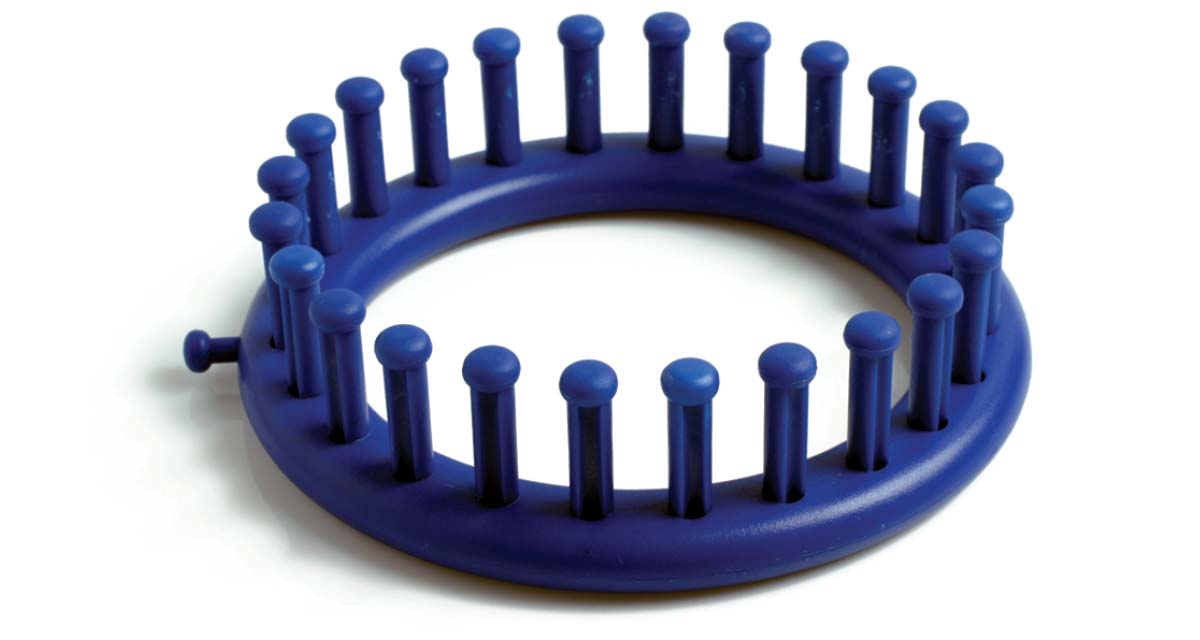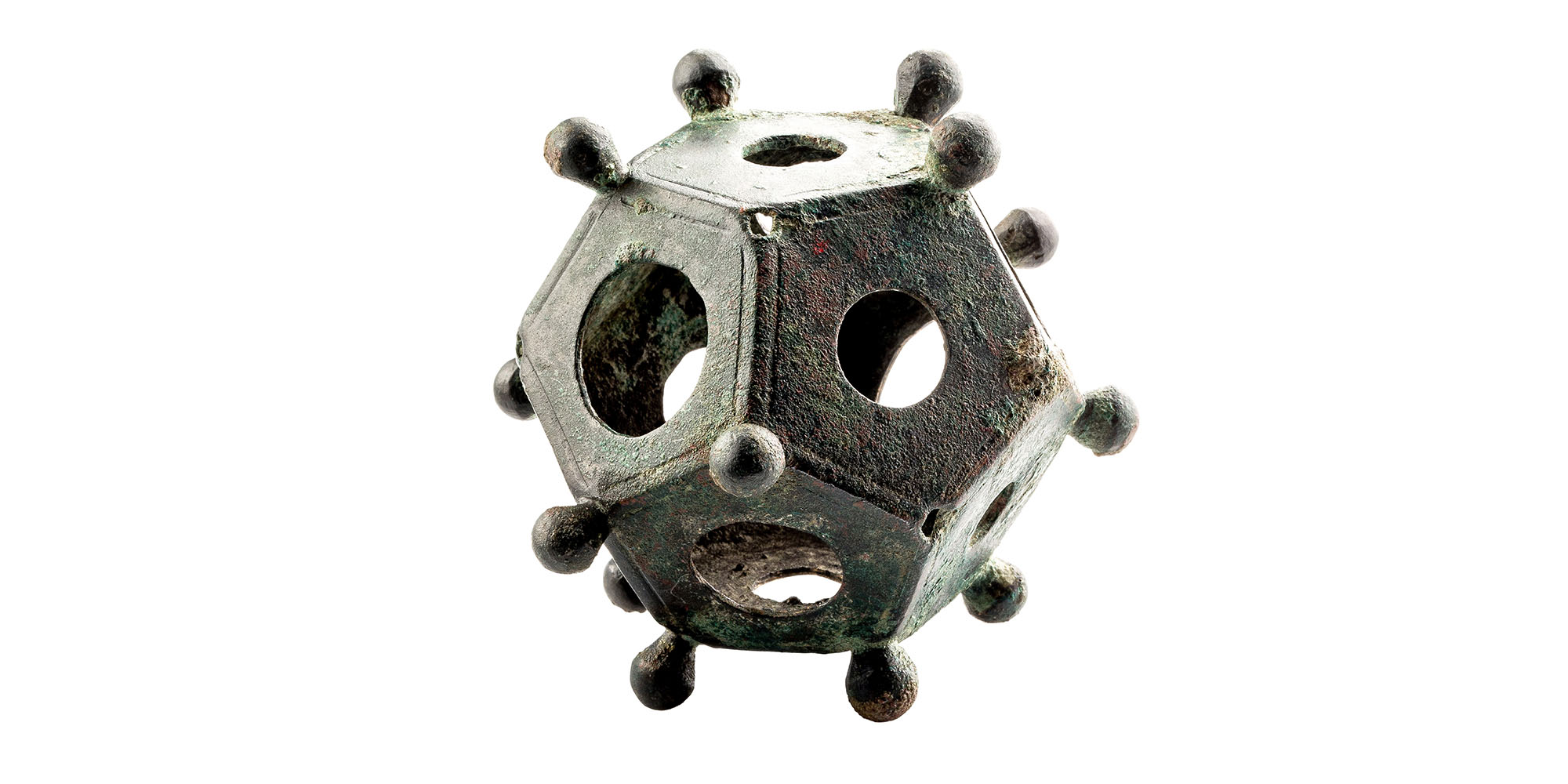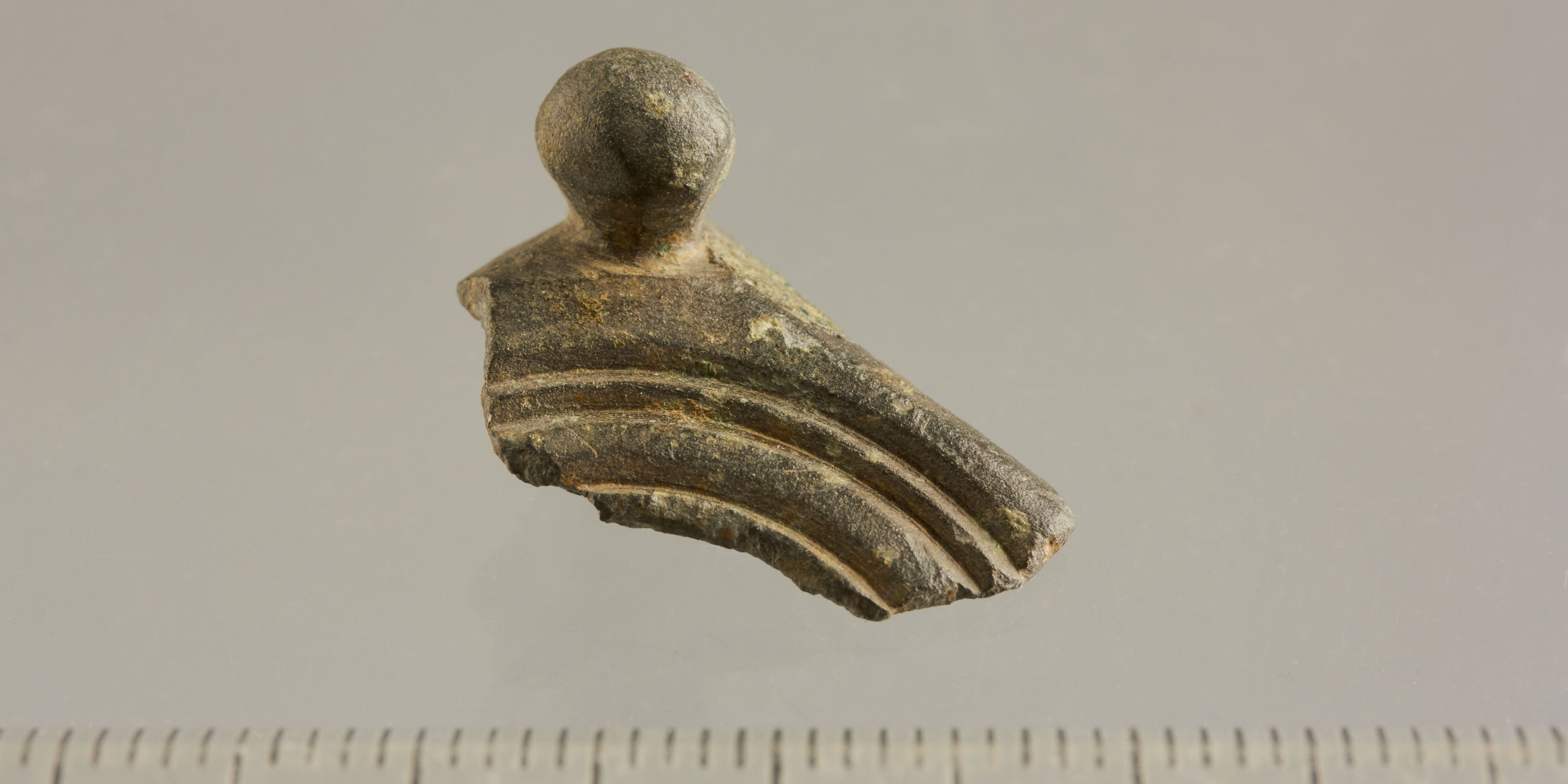Anthropology
Related: About this forumSecond mysterious dodecahedron found in Flanders

Gallo-Romeins Museum Tongeren
A dodecahedron dating from the Roman era has been discovered in a field in Kortessem (Limburg) by an amateur archaeologist. The object is extremely rare and has now been donated to the Gallo Roman Museum of Tongeren where it will be on view to the public.
Colin Clapson
Tue 10 Jan 12:18
A dodecahedron is a geometric figure that possesses twelve pentagonal sides that have little spheres at each corner. It is made of bronze and is hollow inside. “It’s never been really clear what they were used for” explains Patrick Schuermans, the amateur archaeologist who made the find. “Experts believe it may have been used as a measuring instrument or was used to look at the stars to allow farmers to know when to sow their seeds or harvest. But it remains guesswork. It’s a real mystery!”
Schuermans is only the third person in Belgium and the second in Flanders to find a piece of a dodecahedron. “When I encountered the item in a field in Kortessem (Limburg) I had some idea of what it was. I’d already seen the object in books and at the museum. The Heritage agency has now confirmed that it is a piece of a dodecahedron”.
Schuermans has donated his find to the Gallo Roman Museum in Tongeren: “The archaeological value is far greater than any financial value. I’m not being paid, but I believe it’s important it doesn’t disappear in a draw and can be exhibited”.
https://www.vrt.be/vrtnws/en/2023/01/10/second-mysterious-dodecahedron-found-in-flanders/
intrepidity
(8,149 posts)But I think it was probably an early Lego-type toy
Probatim
(3,099 posts)Docreed2003
(18,071 posts)Efilroft Sul
(3,874 posts)alittlelark
(18,958 posts)Over and over and over.
calimary
(85,257 posts)MiHale
(11,292 posts)Or a building block kinda like Lego but using holes and pin/peg to join. Different size round end of pin will fit into corresponding hole. Flat sides are for stability.
chowder66
(10,177 posts)Effete Snob
(8,387 posts)The holes being different sizes suggest a measurement device of some kind.
Effete Snob
(8,387 posts)It looks like some kind of gauging or ranging device. Since the holes aren’t the same size then lining up the device at an appropriate distance from the eye, and then sighting an object of known size through it, could provide a distance measurement. A type of surveying device.
Backseat Driver
(4,662 posts)Farmer-Rick
(11,667 posts)From 2 to 4 inches.
I thought they were 2 to 4 feet. Big difference.
Qutzupalotl
(15,235 posts)“ A dodecahedron is a geometric figure that possesses twelve pentagonal sides that have little spheres at each corner” should read: “ A dodecahedron is a geometric figure that possesses twelve pentagonal sides. This one has little spheres at each corner.”
Iggo
(48,722 posts)Joinfortmill
(17,384 posts)packman
(16,296 posts)StClone
(11,869 posts)Duppers
(28,283 posts)BumRushDaShow
(147,984 posts)5 sides, each side with a hole of a different size. Plus add a "hand" size device that could possibly just be a ring with similar pegs/knobs like this, and voila -

Making the circular metal rings with pegs would be easier than fashioning that dodecahedron with plates having different sized holes, so I can see how a dodecahedron would be kept more close to the vest as "valuable" by an owner. It's also possible that there are "bracelets" with pegs on them that are just being called "ancient jewelry" but are actually functional for that knitting purpose for the larger hand section.
Warpy
(113,131 posts)but not around the Mediterranean, suggesting that they were used as jigs for manufacturing something necessary in cold climates.
Knitters have used them to knit glove fingers of various sizes, more successful with crude, heavy yarn than with light yarn, and very wearable. The palms of such gloves would likely have been made of leather and fingers would have worn out constantly, requiring frequent replacement. The largest holes might have accommodated leather strips to be knitted together in long strips, to be used as reains and other items. Best of all, it would have kept an army busy during their down time, cutting down on the drinking and carousing and keeping them ready in case they were needed.
FakeNoose
(36,729 posts)Why else would the marauding Roman soldiers have brought it with them to a foreign outpost? Maybe this item was used for gauging projectiles or arrows of some kind.
The video upthread suggests that it could have been used for knitting or crocheting gloves. Well okay it's possible, but those gloves would have been made by the Roman wives or servants back home. The soldiers wouldn't be crocheting out in the field before taking down an enemy army.
There must be some military reason for this item. Otherwise they would have left it back home.
![]()
![]()
KS Toronado
(20,834 posts)could it have been a game rolling piece? Depending on what size hole would be on top after rolling
would decide how many spaces you got to move on an early monopoly game? ![]()
The Jungle 1
(4,552 posts)It is a complicated shape.
Brother Buzz
(38,216 posts)Lost wax casting of some sort would be my guess
The Jungle 1
(4,552 posts)Iggo
(48,722 posts)Judi Lynn
(163,027 posts)Patrick Schuermans discovered a fragment of a 1,600-year-old dodecahedron in Belgium
Sarah Kuta
Daily Correspondent
February 6, 2023

An intact Roman dodecahedron at the Gallo-Roman Museum Flanders Heritage Agency
Amateur archaeologist Patrick Schuermans was wandering around a field in northern Belgium when his metal detector alerted him to the presence of something underfoot. When he located the item in question, he realized it might be something special.
He had stumbled upon a fragment of a 12-sided Roman object called a dodecahedron. It’s likely more than 1,600 years old, according to the experts at the Gallo-Roman Museum in Tongeren, Belgium, where Schuermans took the fragment in December. His find will now go on display at the museum alongside an intact bronze dodecahedron found nearby in 1939.
Schuermans, who has been hunting with his metal detector for years, found the fragment near the town of Kortessem in Flanders. His discovery is only the second known dodecahedron found in the area, per a statement from the government-run Flanders Heritage Agency. Experts believe the piece belonged to a dodecahedron that measured roughly two inches across.

The fragment discovered in northern Belgium Flanders Heritage Agency
Dodecahedrons have long perplexed archaeologists and historians. They are typically 12-sided geometric objects made of metal with hollow centers. They’re about the size of a baseball and are dotted with large holes; studs protrude from each corner.
More:
https://www.smithsonianmag.com/smart-news/amateur-archaeologist-discovers-mysterious-roman-object-possibly-used-for-magic-180981582/